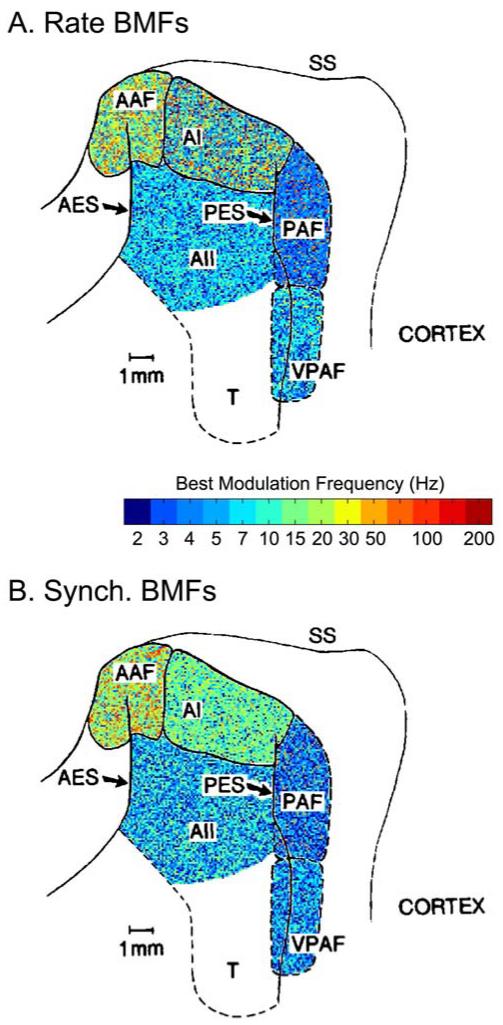Figure 14.
Best modulation frequencies (BMFs) for AM tones as a function of anatomical region in the cat (Schreiner and Urbas, 1988). The underlying map is adapted from Andersen et al. (1980), whose terminology is employed by Schreiner and Urbas. Rate (A) and synchrony (B) BMFs were obtained for 172 single-units using 14 AM rates from 2.2 to 200 Hz (see colorbar, note that “2” really means “< 2.2” since no lower AM rates were tested). Each of the five cortical regions was colored according to the proportion of BMFs observed at each rate (positions within a given field are assigned randomly). This quickly summarizes the results for the main conclusions: AAF exhibits the fastest BMFs (up to 100 Hz, but still typically near ~20 Hz) followed by AI. The ‘belt’ regions AII, PAF, and VPAF exhibit the slowest BMFs, overwhelmingly in the fluctuation range (~1-10 Hz). PAF (receiving heavy input from MGBd) is the slowest, with a clear preference for ~2-5 Hz AM.

